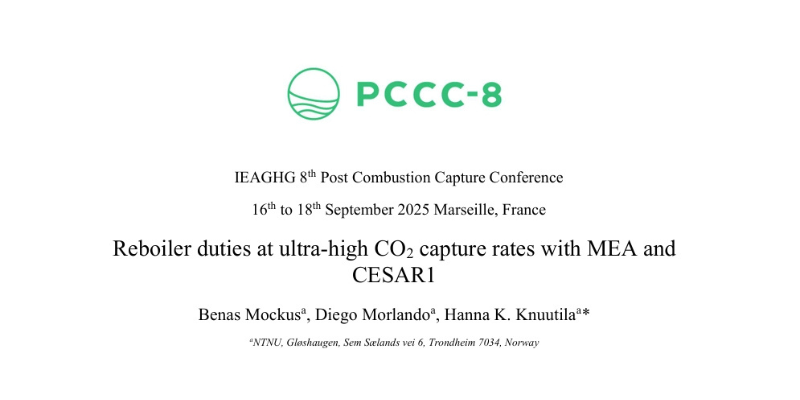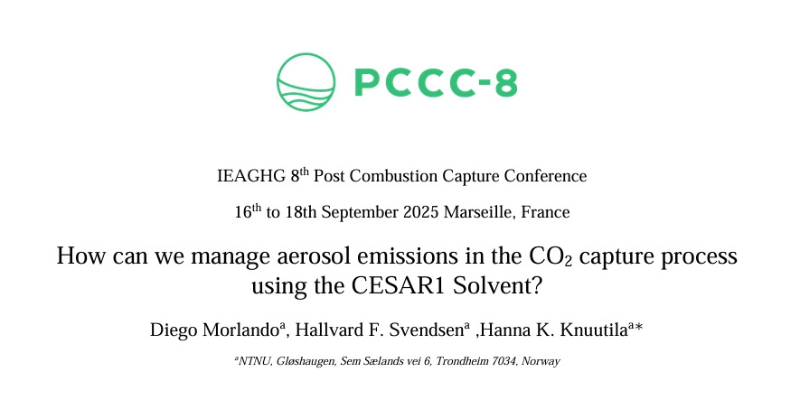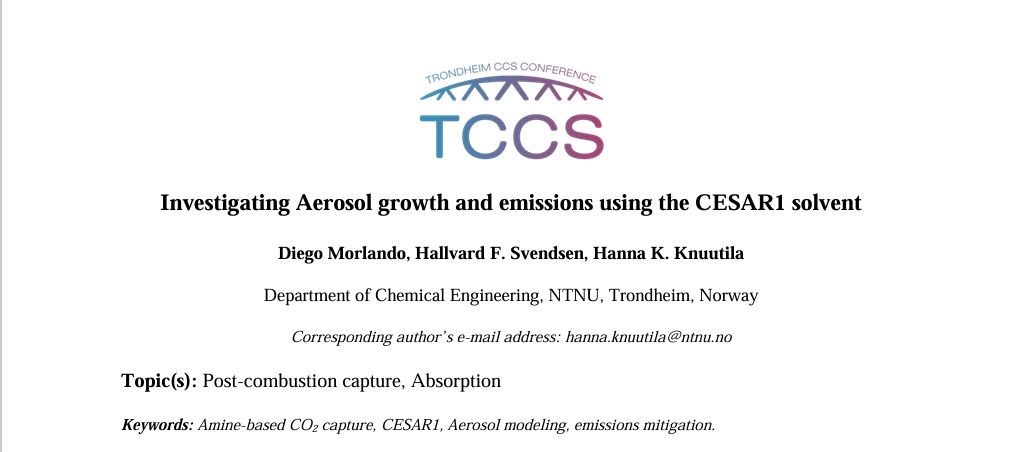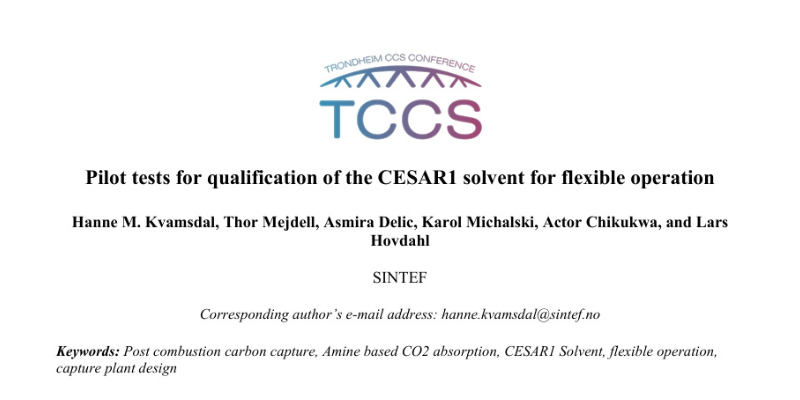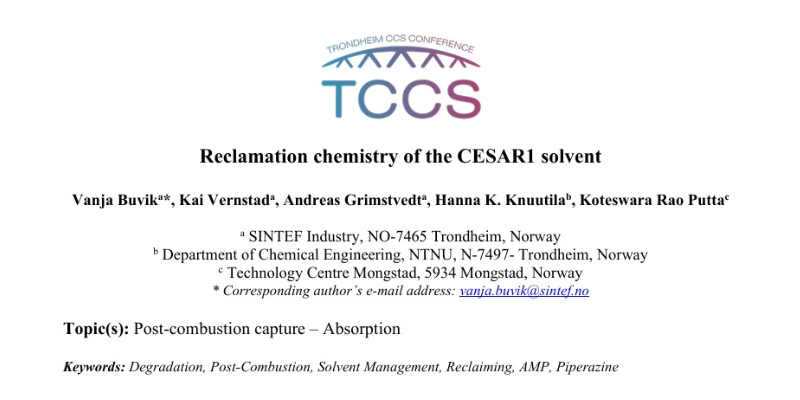
av Manelle Sokar | jun 6, 2025 | Conference Abstracts
Abstract Growing global temperatures and human population lead to a constant increase in energy demand (Smit et al., 2014). Even with the growing energy supply from renewable sources, consumption of fossil fuels is inevitable in the future (Khaleel et al., 2022)....

av Manelle Sokar | jun 6, 2025 | Conference Abstracts
Abstract Chemical absorption using a blend of 3 M 2-amino-2-methyl-1-propanol (AMP) and 1.5 M piperazine (PZ) has gained attention due to its low energy demand and high degradation resistance. However, solvent emissions remain one of the major challenges to its...

av Manelle Sokar | mai 22, 2025 | Conference Abstracts
Abstract CO2 capture using amine-based absorption is the most mature technology to decarbonize carbon intensive industries, Bui et al. (2018). Research has been focused on studying solvents that are stable, environmentally sustainable and energy efficient. The CESAR1...

av Manelle Sokar | mai 22, 2025 | Conference Abstracts
Abstract CO2 capture plays a fundamental role in achieving the climate change goals set by the Paris Agreement 2015. Capturing 90% of the CO2 being emitted from industrial sources is not enough, (Brandl et al., 2021). There is a need to design, optimize and qualify...

av Manelle Sokar | mai 22, 2025 | Conference Abstracts
Abstract Many large-scale capture plants will need to be operated in a flexible and dynamic manner to cope with varying flow rates and/or CO2 concentration in the flue gas from the host plant. Under such circumstances, careful design of the capture plant is required,...

av Manelle Sokar | mai 22, 2025 | Conference Abstracts
Abstract The CESAR1 solvent is possibly the most popular non-proprietary solvent blend for CO2 capture and has been under thorough investigation in the past decade (Benquet et al., 2021; Buvik et al., 2024a; Campbell et al., 2022; Hume et al., 2022, 2021; Moser et...
